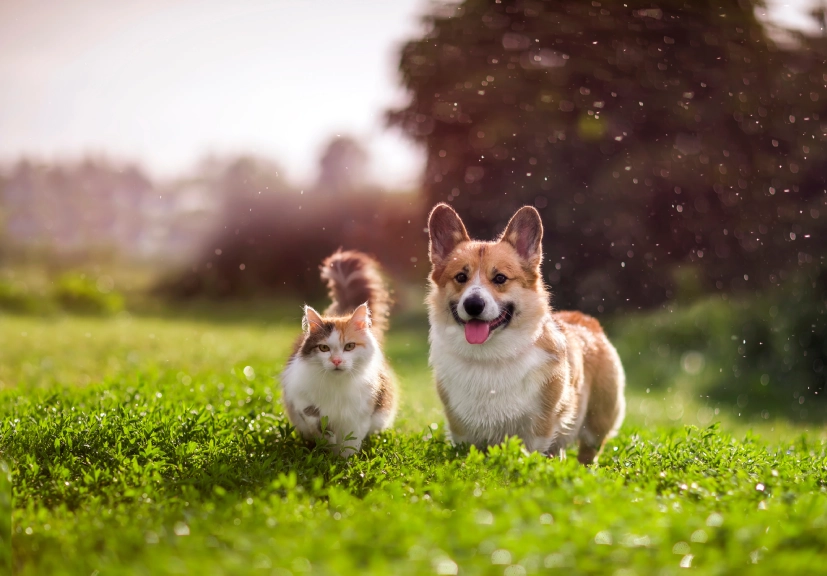Essential Training Tips for Cats & Dogs

Whether you’ve got a curious cat or a doting dog, training is essential for strengthening your bond and promoting their well-being. Focus on positive reinforcement techniques, rewarding desired behaviors with treats and praise. Keep sessions short and engaging, tailoring your approach to your pet’s unique personality. With patience and consistency, you’ll build a harmonious household where your furry friend thrives. Discover the best tricks and techniques to unlock your pet’s full potential.
Why Try Cat Training?
While many people assume cats can’t be trained, engaging your feline friend in training activities offers numerous benefits for both you and your pet. Training provides mental and physical stimulation, as well as positive social contact. Cats are motivated on a “pay-to-play” basis, so they’ll participate in training games only if the rewards are worthwhile. Use positive reinforcement rather than punishment to encourage desired behaviors. Since cats have a “teenager-like” attitude, it’s best to avoid provoking unwanted actions in the first place. Instinctively using a litter box and rarely exhibiting play biting, cats are easier to train than dogs in some aspects. Incorporate training sessions around a cat tree or scratching post to redirect natural scratching behaviors.

7 Functional Tricks You Can Train Your Cat to Do
Have you ever wished your cat could be more helpful around the house? Through positive reinforcement training, you can teach your cat functional tricks that make life easier. Clicker training is effective for teaching cats to target a wand or finger, sit on command, and come when called. This method involves rewarding desired behaviors with treats and praise. You can also train your cat to voluntarily enter their carrier or a box, which is handy for vet visits or travel. The “find it” game, where you toss treats for your cat to locate, provides mental stimulation. Repeatedly rewarding gentle behavior around hands discourages play biting. Keep training sessions short, 5-10 minutes, to maintain your cat’s interest and avoid frustration.
The Importance of Cat Training Sessions
Keeping training sessions short and engaging is key to successful cat training. Limit each session to 5-10 minutes, as cats have a limited attention span. Shorter, more frequent sessions throughout the day are more effective than one long session. Conduct training in a calm, distraction-free area to help your cat focus. Pay attention to signs of disinterest or lethargy, and postpone the session if needed. Offer high-value treats to keep your cat motivated. Consistency is crucial; schedule regular training sessions to reinforce desired behaviors, such as using the litter box. With patience and positive reinforcement, you can train your cat to be a well-behaved companion. Remember, every cat is unique, so tailor your approach to your cat’s individual needs and personality.
Building Harmony Between Cats and Dogs
How can you create a harmonious household when introducing a cat and dog? Gradually expose them to each other’s presence, allowing time to adjust to new scents and sounds. During initial meetings, keep your dog leashed while your cat roams freely. Encourage your dog’s calm behavior around the cat through positive reinforcement; teach commands like “leave it” and “watch me.” Provide your cat with a dog-free sanctuary and vertical escape routes. Supervise interactions until you’re confident they get along, and consider trimming your cat’s nails or using caps to prevent injuries. With patience and consistent training, you can help your pets coexist peacefully. Give your pet the guidance it needs to build a harmonious multi-species household.
Best Pet Training Techniques for Positive Reinforcement
Positive reinforcement is a highly effective approach to pet training that focuses on rewarding desired behaviors rather than punishing unwanted ones. When you encourage your cat or dog with treats, praise, or playtime immediately after they perform a desired action, it reinforces that behavior and makes them more likely to repeat it. Consistency is key; use the same cues and rewards each time. Break complex behaviors into smaller steps and reward progress along the way. Training sessions should be short – one long session can be counterproductive. Keep things fun and engaging for both you and your pet. With patience and persistence over weeks or months, positive reinforcement will help your pets feel confident and strengthen your bond.
Frequently Asked Questions
How Do You Train a Dog and Cat?
Establish positive reinforcement for both pets during gradual introductions. Maintain consistent discipline, redirecting undesirable behaviors. Provide ample playtime to burn energy and reduce tension. With patience and supervision, you can train them to coexist peacefully.
How Long Does It Take for a Dog to Get Used to a Cat?
When introducing a dog to a cat, expect a 1-2 week adjustment period. Introduce them slowly, make environmental changes to reduce stress, and monitor their behavior. With patience, they’ll likely adapt to each other.
Is It Takes to Train a Cat Than to Train a Dog?
Yes, it generally takes longer to train a cat than a dog due to feline training challenges like independence and selectivity. However, with patience, creativity, and methods like clicker training, you can successfully train your cat.
What Is the Easiest Thing to Train a Cat?
Litter box training is the easiest thing to teach your cat. They’re instinctively drawn to it. Focus on positive reinforcement, socialization, and establishing good grooming habits early on for a well-adjusted, happy feline friend.
Tags
What do you think?
Related Articles

Best Toys for Happy Pets
To keep your pet happy, choose toys that match their personality, age, and size. For…

Choosing Safe Toys for Your Pet
When choosing safe toys for your pet, prioritize durable, non-toxic materials like…

Tick Removal and Prevention Tips
Mental stimulation is essential for your pet’s cognitive health, development, and overall…